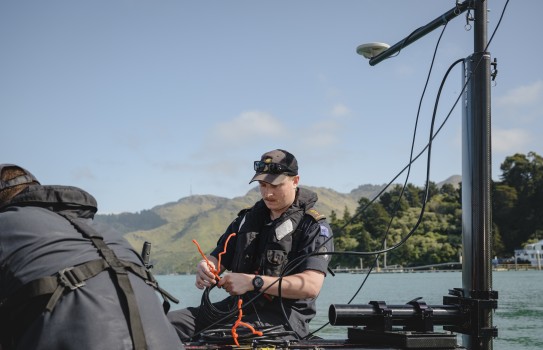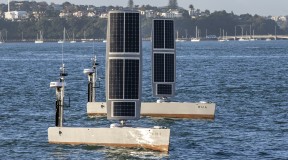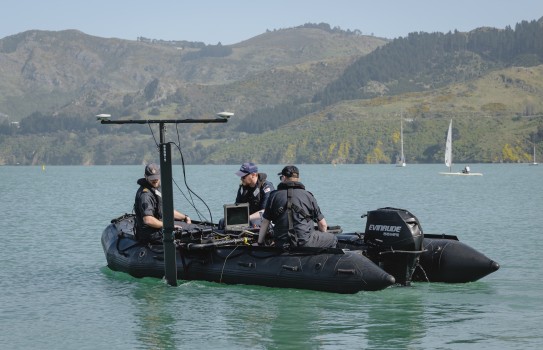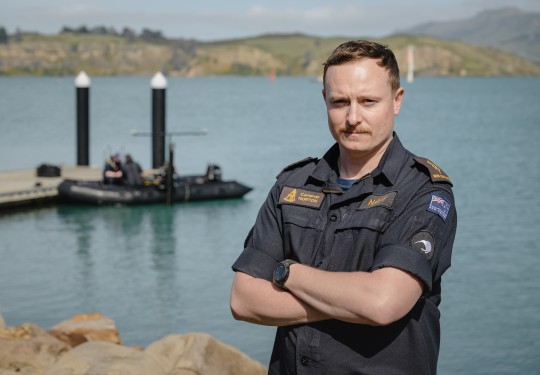Christchurch plumber becomes Navy survey specialist
Able Rating Cameron Norton has gone from a career in plumbing to plumbing the depths.
25 September, 2025
He joined the Royal New Zealand Navy two-and-a-half years ago, looking for a career change and to test himself outside of his hometown of Christchurch.
“I wanted to join the Navy when I was at Lincoln High School. I then got offered my plumbing apprenticeship so did that and continued in plumbing for about 10 years, and was starting to get older and knew if I wanted to do it I needed to do it now, so went for it”.
Now aged 30, and a Hydrographic Systems Operator at HMNZS Matataua, Able Rating Norton says it’s difficult to explain his job to family and friends, but in a nutshell his role assists in the making of nautical charts and maps of the seafloor using highly technical sonar and survey equipment.

“For hydrography it was actually the recruiter that started to talk to me about it, and then once he had told me about the trade then I didn't want to do anything else really.
“I always liked being outside, on the water. I love what I do now.”
Usually based at Devonport Naval Base in Auckland, Able Rating Norton recently returned to the South Island as part of a five-strong team taking part in surveys of boat ramps in Nelson, Christchurch, Dunedin and Bluff in preparation for potential future operations of the Navy’s latest
In partnership with New Zealand Customs, the Royal New Zealand Navy operate two Uncrewed Surface Vessels (USVs) ‘Tahi’ and ‘Rua’.
While the Navy has no current plans to operate the USV from the South Island, the survey would ensure it could do so if the need arose.

Since the Navy first acquired the USVs in late 2023, they have been operated extensively in the Hauraki Gulf and Coromandel areas and more recently in Fijian waters conducting border protection taskings. The USVs have a relatively large keel, which means the boat ramp gradient is the most important factor when launching from shore.
“The survey we’ve conducted is about knowing exactly where the USVs can and cannot operate from in the South Island if we ever need to.”
The Navy’s newest USVs, named Tahi and Rua, are seven metres long and weigh one tonne. They can be transported by ship, air or by road on a trailer and are renewably powered by solar, wind and wave energy, giving them a three-month mission endurance and unlimited range. This means they can stay at sea for long periods without support.
Acoustically silent, they are particularly suitable for conducting surveillance and reconnaissance operations and are packed with sensors, radar, camera and communication equipment. While at sea, they are monitored 24/7 by Navy personnel in a control room at the Devonport Naval Base.
